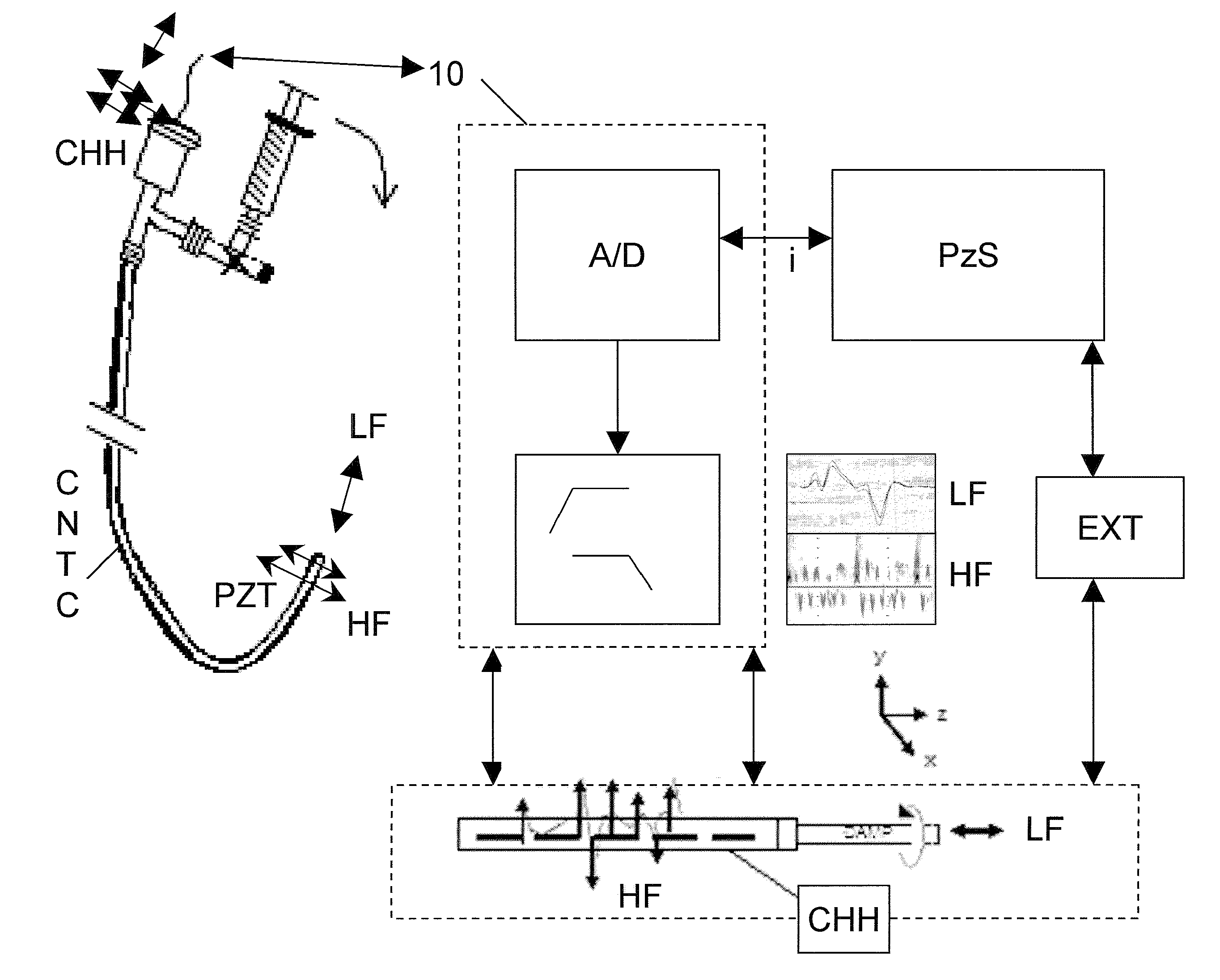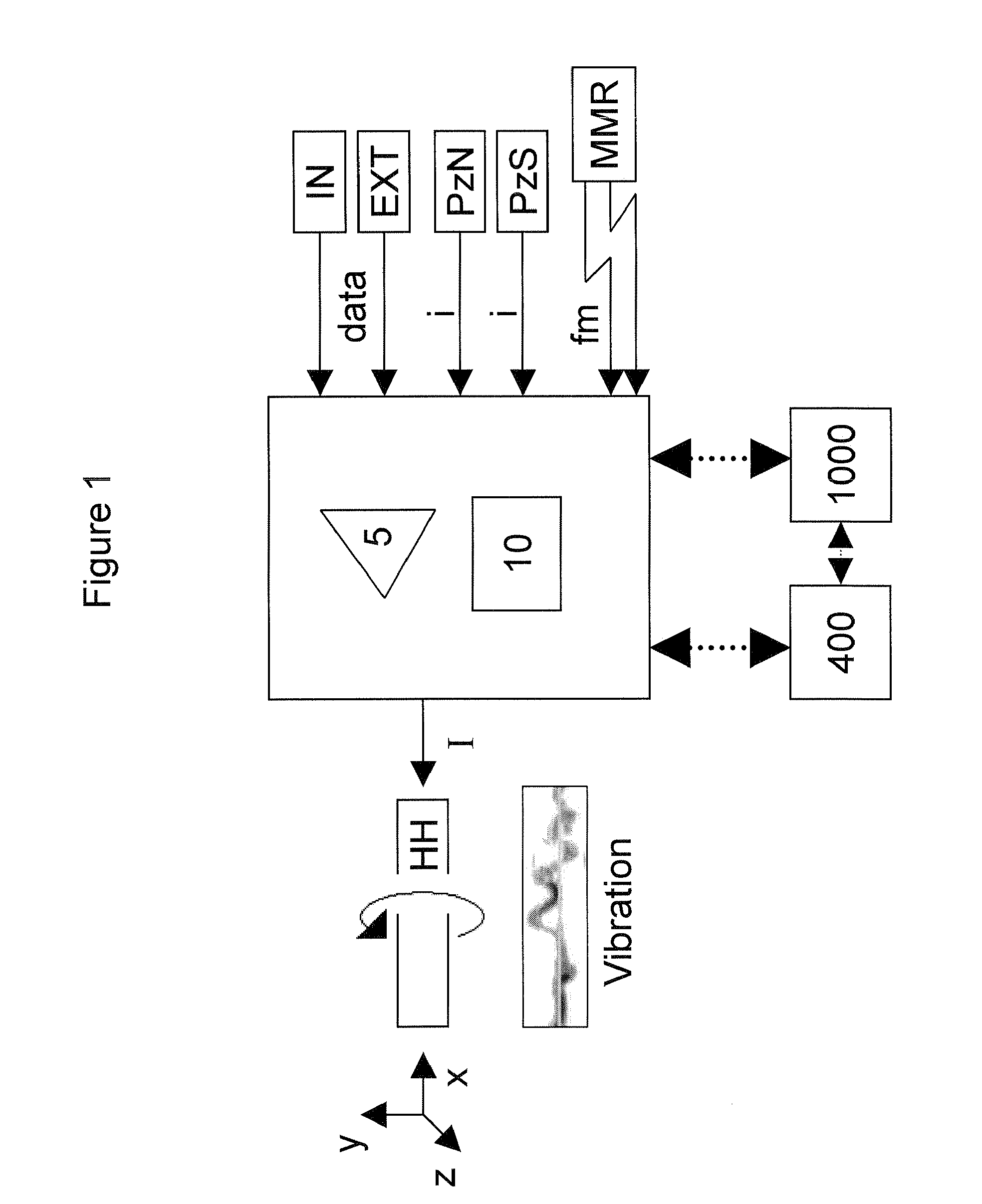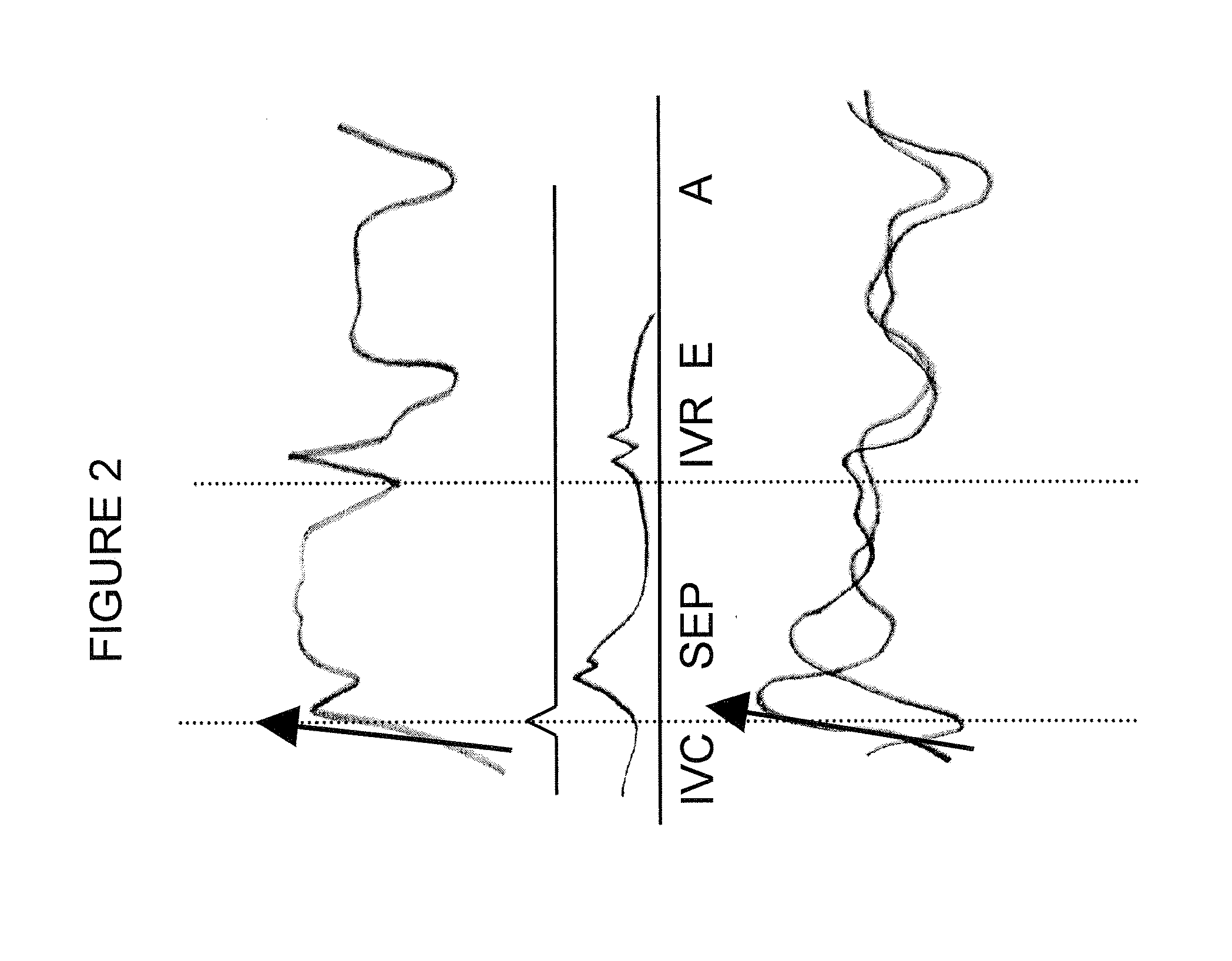Cardiovascular haptic handle system
a haptic control and hand-held technology, applied in the field of hand-held haptic control systems, can solve the problem of not providing a tactile simulation of dynamic cardiac properties in real tim
- Summary
- Abstract
- Description
- Claims
- Application Information
AI Technical Summary
Benefits of technology
Problems solved by technology
Method used
Image
Examples
Embodiment Construction
Data Acquisition: Motion Sensors
[0052]In one mode of this invention, temporary or permanently implanted cardiovascular instrumentation (e.g. cardiac catheters or implanted pacemaker / defibrillator leads, respectively) is equipped with transducers that acquire sensor signals from within the cardiac tissues and surrounding vasculature. By way of example, a piezoelectric sensor acquires information related to the motion of the contacted cardiac tissues and flow characteristics of intra-cardiac blood (e.g. turbulence, laminarity). The motion and / or deformation of the sensor are directly proportionate to that of the neighboring tissues or fluid flow. The amount of piezoelectric voltage generated will bear a relationship (i.e. linear, exponential) to sensor motion / deformation. Physiologic indices that can be derived from these measurements include but are not limited degree of displacement, torque, frequency of motion (can be along specific vectors), anatomic localization, sensor orientati...
PUM
 Login to View More
Login to View More Abstract
Description
Claims
Application Information
 Login to View More
Login to View More - R&D
- Intellectual Property
- Life Sciences
- Materials
- Tech Scout
- Unparalleled Data Quality
- Higher Quality Content
- 60% Fewer Hallucinations
Browse by: Latest US Patents, China's latest patents, Technical Efficacy Thesaurus, Application Domain, Technology Topic, Popular Technical Reports.
© 2025 PatSnap. All rights reserved.Legal|Privacy policy|Modern Slavery Act Transparency Statement|Sitemap|About US| Contact US: help@patsnap.com



